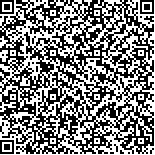下载中心
优秀审稿专家
优秀论文
相关链接
摘要

在干热谷地区的研究中,大都根据海拔高度划定干热谷气候区的范围.而实际上,干热谷景观同时受地形特征(包括高程、坡度和坡向)和人类活动的多重影响.单纯利用高程信息划分干热谷景观区,而没有考虑以上多种因素的影响,显然难以正确地识别不同的自然景观.本文以最为典型的元谋干热谷为例,首先利用多波段混合运算方法提取山体阴影区,从而剔除坡向的影响;然后,以DEM数据为基础,针对陆地卫星影像,分别采用土地利用绘图法、陆面温度阈值法和干热指数法(RTVI,Ratio of Temperature and NDVI)三种方法对干热谷景观进行识别; 最后,利用景观生态学方法对以上识别结果进行对比分析.结果发现,干热指数用于识别干热谷景观区域是最为简单可行的方法; 从研究区域的典型干热谷景观分布特征来看,该景观虽然已远远超出传统高程划分的1350m上限,但是,超出这一上限的干热谷景观斑块相对破碎,水体及植被斑块与干热谷景观斑块交错连接,说明这一区域生态恢复的能力较强.
关键词:
元谋 干热谷 多波段混合运算 干热指数(RTVI) 热红外 遥感 辅助下 元谋 干热环境 识别与分析 DEM Data Images Yuanmou Environment Analysis 能力 生态恢复 交错连接 植被斑块 水体 景观斑块 分布特征 景观区域 热指数 发现The dry-hotvalley is a special landscape in themountainous area of south-westChina. It is found that the typical dry-hot valleys were mainly occupied by slope non-irrigated field, grass land, bare and semi-bare land below 1650m, topographic shadows and seasonal leave unused land with the value of slope less than 0·5°when the altitude is below 1350m. So it is not enough to identify the dry-hot areas just by elevation of 1100—1350m ( the traditional method). Because it is influenced notonly by the topographic characteristics related to elevation, aspect and slope, but also by human activities. In this paper, land use/covermappingmethod, brightness temperature threshold method and dry-hot indexmethod were used to identify the typical dry-hot valleys in Yuanmou, Yunnan province, China. Landsat ETM+ data acquired on 23rdNovember, 1999 were selected for themapping of typicaldry-hotvalleys. For the land use/cover mapping method, more works were involved including mapping different land use/cover types and identifying topographic shadows. And then the brightness temperature threshold method was proposed and employed, forwhich the determination of brightness temperature threshold was difficult and the identification of topographic shadows was also involved to elmi inate the influence of topographic shadows on brightness temperature. To solue this problem, a multi-spectral operationmethod was proposed. It is not enough for brightness temperature threshold method to represent the characteristics ofdry-hot landscapes, so a dry-hot indexmethod(RTVI, ratio of temperature andNDVI)was proposed. In themapping of typicaldry-hotvalleysbyRTVI, bare land between 1350m and 1650m was elmi inated from the typicaldry- hot valleys, which should be included by dry-hot landscapes. So normalized difference bareness index (NDBaI) wasused to rectify themapping results.The identification resultswere compared with landscape ecologicalmethod. The agreements between the results of land use/covermapping and RTVI suggested that the proposed dry-hot indexmethod in this paperwas feasible and easily performed. And then the dry-hot landscape characteristicswere analyzed in differentvertical zones. The analysisofdry-hot landscape in different vertical zones show that the dry-hot landscape obviously exceeds the upper lmi it of traditional elevation(.i e., 1350m), and the values of NP and PD in the elevation of1350—1650m(6732 and 0·5117) weremuch greater than those below the elevation of 1350m(1873 and 0·1424), and the value of LPI in the elevation of 1350—1650m(0·3757) was much smaller than that below the elevation of 1350m(2·57). Those values indicated that the exceeded patcheswere fragmentized. Themapping results showed that the exceeded patchesweremosaic distributed with water and vegetation patches, which suggested thatthe recovery oforiginal landscape in the elevation of1350—1650mwas easier than the area in the elevation of1100—1350m.

